Brian May rig tour: “Brian’s not going to use a Fractal rackmount and in-ears; he wants to hear three screaming AC30s behind him thumping him in the back”
Brian May’s long-standing tech Pete Malandrone takes us on an intimate tour of the Queen guitarist’s current touring rig

Pete Malandrone has been Brian May’s guitar tech, estate manager and right-hand man for the past 20 years or so and, with Queen’s touring life now fully invigorated following the recruitment of American vocalist Adam Lambert in 2012, the pressure on the amiable Londoner to keep the legendary guitarist’s stage equipment up and running has rarely been more intense.
“Not many players have an instantly-recognisable sound.” He assures us. “You can tell Brian a mile off, and that’s why he’s a brilliant guitarist and why people love him so much. You know, it’s him, his guitar, a treble booster, an AC30, a bit of chorus and that’s it. It’s not changed for a million years!”
Brian has used Vox AC30s for over fifty years after being inspired by both the music and guitar tone of Rory Gallagher. The Irishman used a Dallas Rangemaster treble booster to send his AC30 into a thick and saturated overdrive, by chance producing just the sound the young May was looking for and he’s used various incarnations of this deceptively simple set-up ever since.
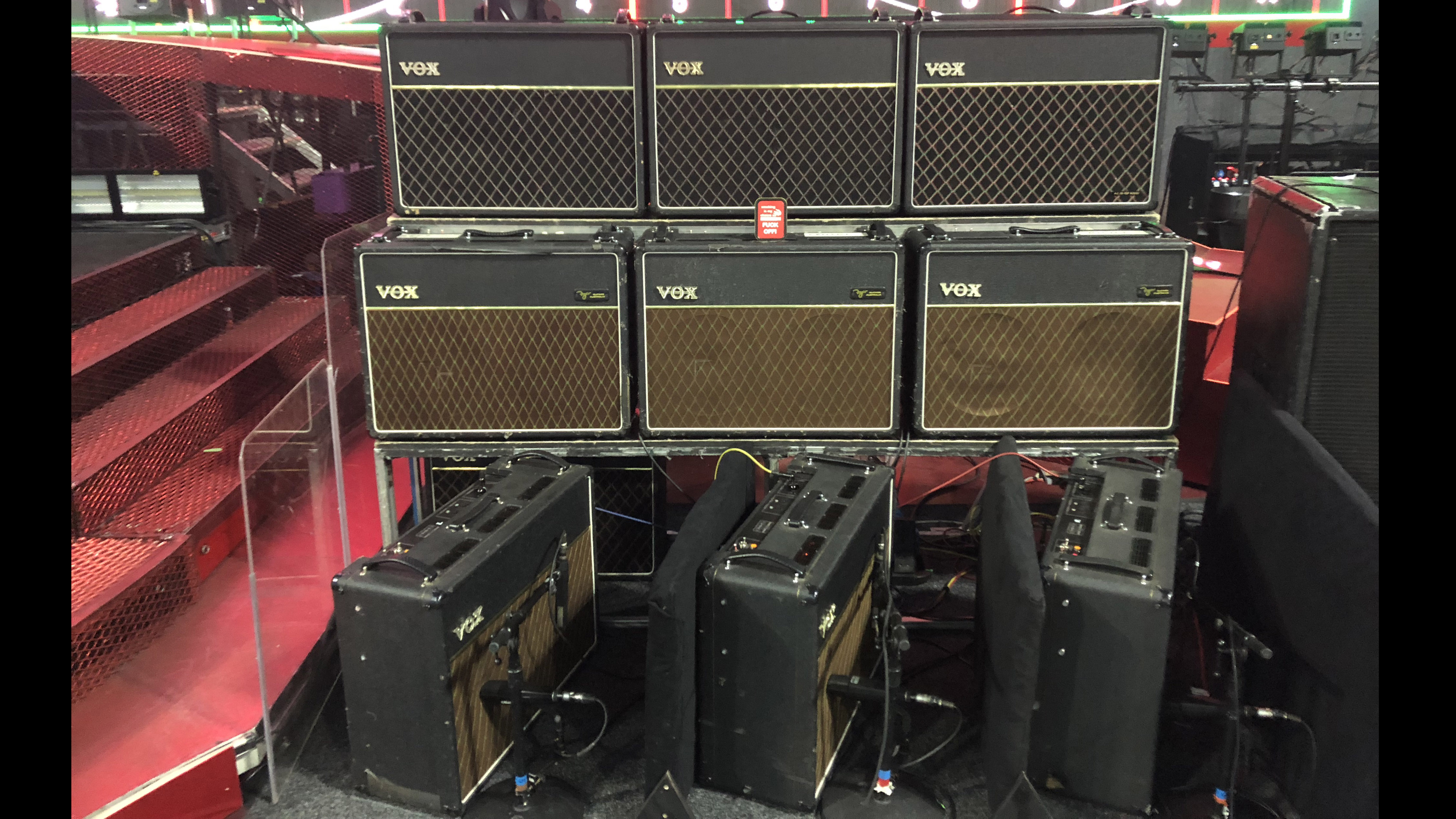
In Queen’s early-eighties heyday May was using no less than 12 AC30s piled up behind him stage left, arranged into four groups of three. One trio was for the dry signal, another for the return from a modified BOSS CE-1 chorus, a third for one return from an MXR DDL II delay and the final three for the return of a longer delay from a second MXR unit.
With various line drivers, treble boosters, routing systems, power distribution systems, custom multicores and expansive pedalboards also incorporated into the mix it was an often temperamental system that needed careful nurturing from not only the techs of the time but also its creator Pete Cornish.
These days Malandrone has pared everything down and now runs a more straightforward wet/dry/wet set-up, and although today’s audiences will see a formation of nine AC30s on-stage; just three are providing sound at any one time.
The amps in the bottom row of the stack are angled counter-clockwise with the centre unit providing the dry tone and the two outside amps the wet signal that comes from the rack. Talking of which…
Want all the hottest music and gear news, reviews, deals, features and more, direct to your inbox? Sign up here.
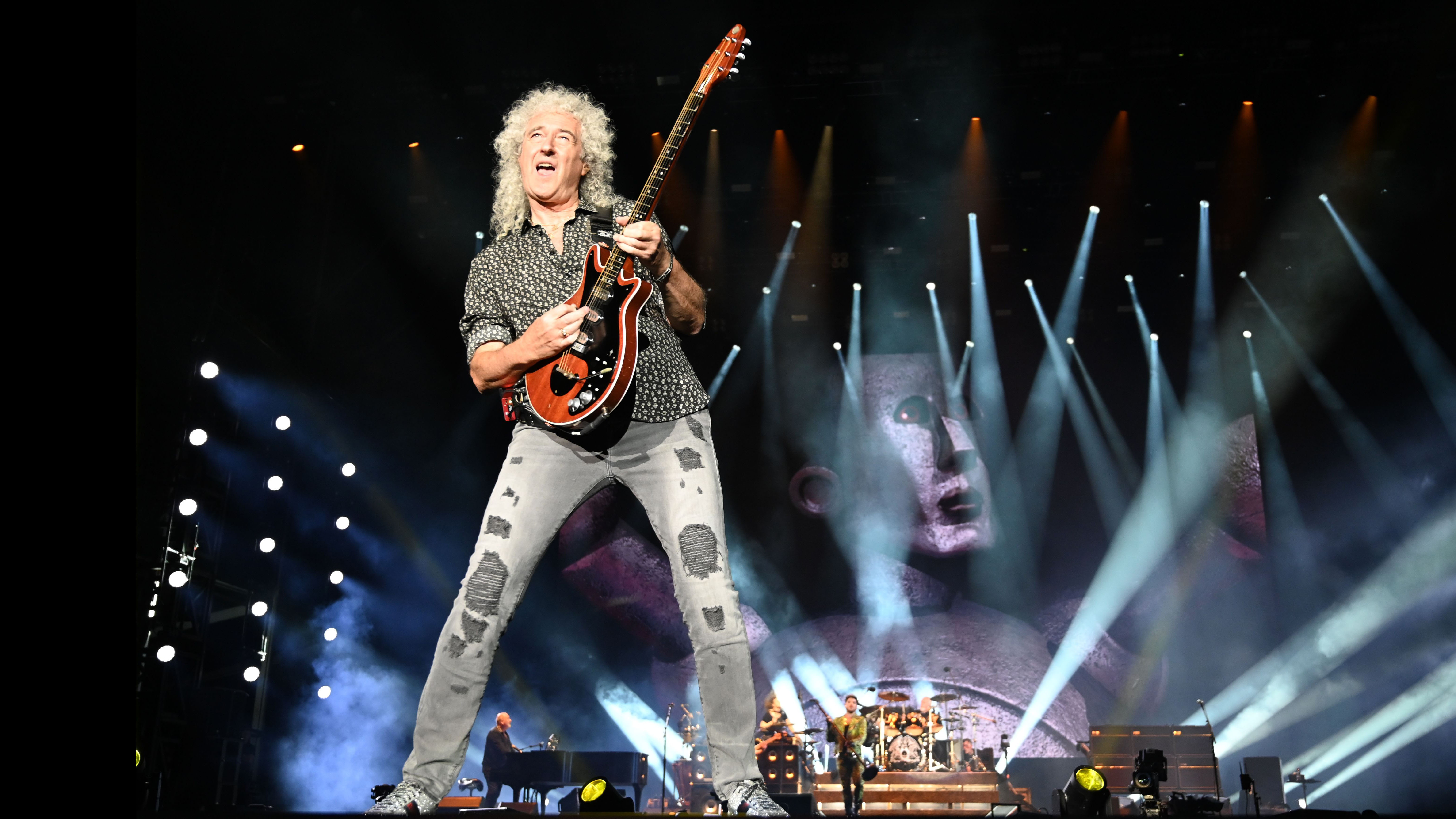
Pete, tell us about the signal path
“Let me see if I can remember! From the guitar the signal goes first into a KAT treble booster and then to a Sennheiser SK-500 transmitter, both of which are mounted on the strap. It arrives via some aerials and goes straight into the Sennheiser receiver, an EW500 G-2, and from there it goes into a custom splitter designed by Mike Hill.
"The main signal then goes first through a Dunlop rackmount wah, a Crybaby DCR-2SR, and is then split a further two ways, one of which goes straight into the centre amp and the other to the effects loops, of which I have two.
"These loops go to separate TC Electronic G-Major 2 boxes, one acting as a spare just in case one falls over or glitches. Also included in the main splitter are a Deacy out and Tuner out, plus various buttons that I have on the top that let me send it to either all three AC30s, just the two outside AC30s, the centre AC30 only or the Deacy.
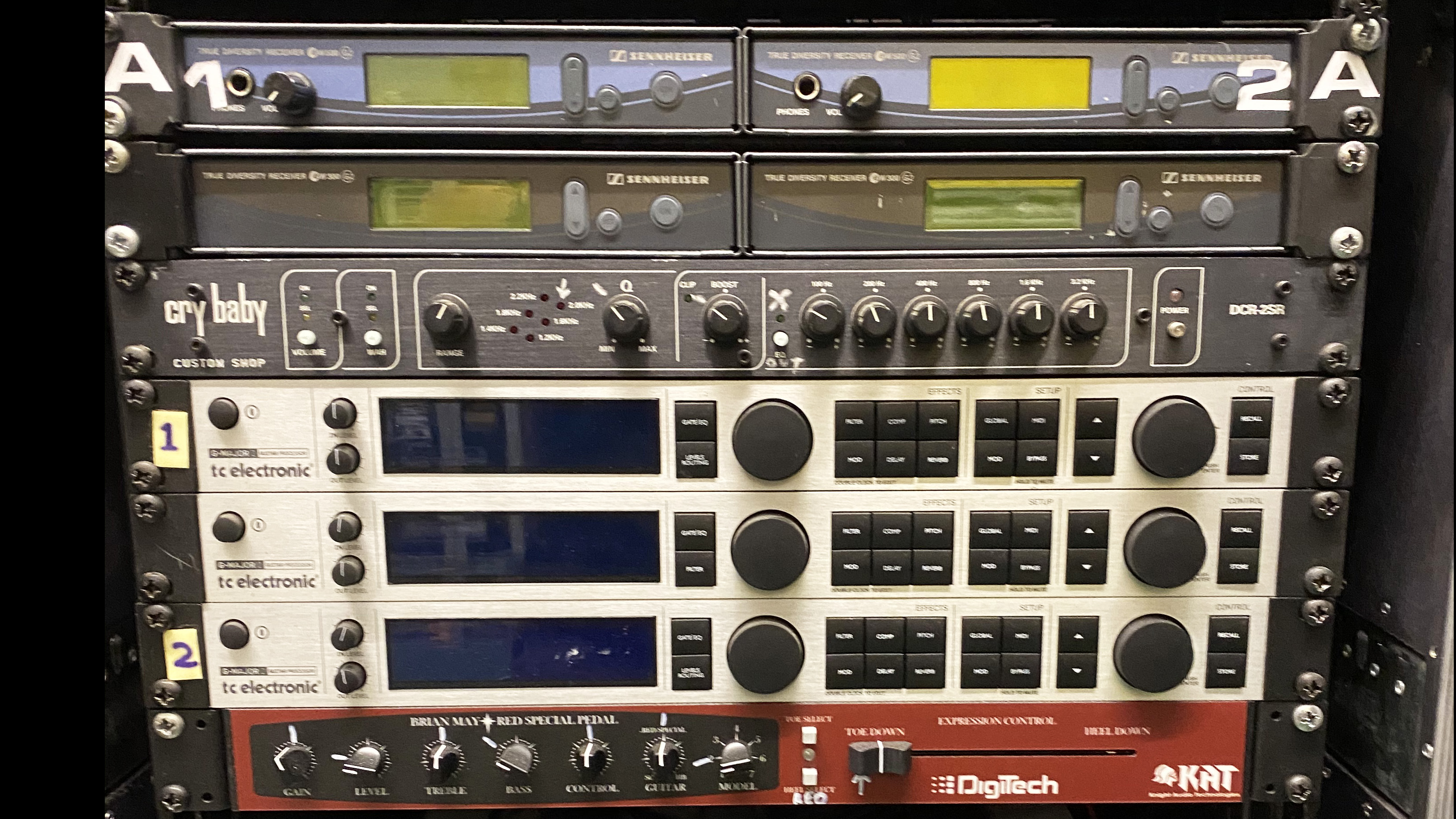
“The tuner is a Korg Pitchblack which is permanently on; it sits on the sidefill by his guitar rack and I can mute him from there. I can also mute the two outside amps and the reason for that is that if we get a problem I can isolate where it might be. Being able to mute the centre amp has other advantages too, for instance on a Paul Rogers tour they’d play a song called Bad Company, which is tuned down, so I’d do that on the G-Major; it was the easiest way to do it without having to run another pair of guitars.
“The other thing in that rack is we wired up another switch to put it through a DigiTech Brian May pedal for Tie Your Mother Down. When he plays the slide solo he switches to another pickup setting but he’s always struggled to pick the slide out of the strap, set the pickups right and hit the note at the start, so I suggested putting a DigiTech in and having it on the Tie Your Mother Down solo setting. That way I could do it so he didn’t have to fiddle about with the switches on the guitar.
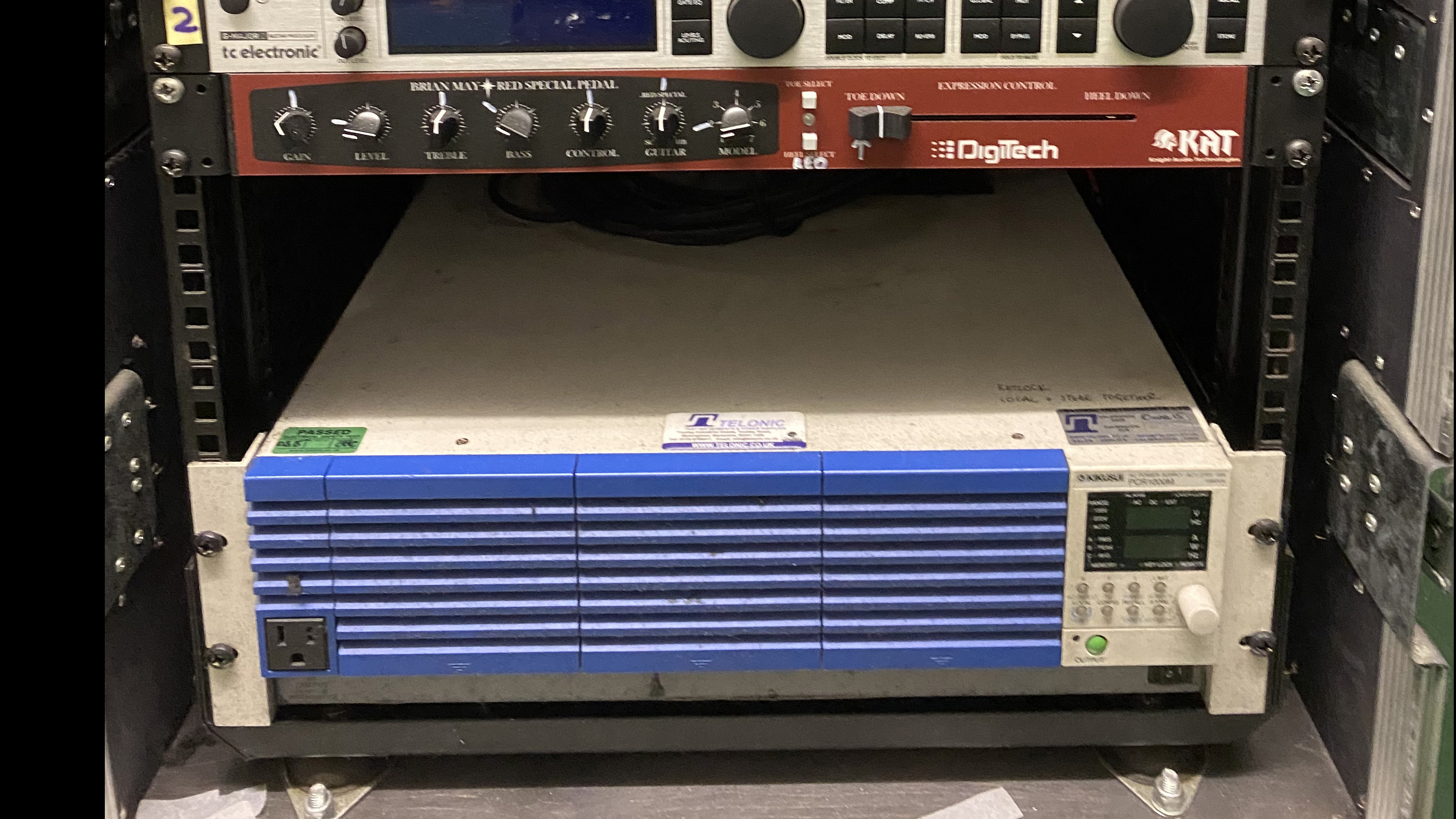
“Finally I have a Kikusui PCR1000M, which sets the voltage for the whole rig, including the amps. Everything I do is set at 234V, which is what the AC30s were designed to run at, so if you get some dodgy 222 or 247 power this will step it up or down and give you a constant 234V. It keeps it at 60Hz rather than 50 too, which really aids the reliability of the amps.”
"Aside from the Dunlop and TC stuff the rest is all custom-built to make it do what I need it to”
Are you constantly on the lookout for upgrades or new gear that might be suitable?
“I haven’t changed the effects in about ten years; his sound isn’t broken. When we started touring again in 2005 I made a conscious decision that I wasn’t happy with the rig because we’d only been using it for guest appearances. So I called you and asked what had the fastest processing speed because I wasn’t happy with what was in there at the time, a Rocktron Intellifex I think; it had a definite glitch and a time lag that I wanted to fix.
"So you turned me onto TC Electronic and I tried a G-Force, and Brian liked it so that was that. It didn’t produce a long enough delay; we couldn’t get it up to 1600ms on one side and 800ms on the other, so when the G-Major 2 came out they told me that it would do it and I swapped them over. I have to say though that aside from the Dunlop and TC stuff the rest is all custom-built to make it do what I need it to.”

How about backups or spares should anything go wrong?
“I have a spare mini rack. With the main system, if anything did fail catastrophically I’d be stuffed; if the splitter went down it would just send the signal through to the centre amp so it wouldn’t go silent but I wouldn’t be able to do anything else.
"So Nigel Knight [from KAT] and I designed a system whereby I’ve got a mini rig that has about half the equipment in it – one G-Major 2 plus a spare, and one radio system – but it still has the wah and eight MIDI switch pedals, and I can A/B between those two if the main rig was to fail. It’s also very portable so if he’s doing any guest appearances anywhere I can just lift it into the back of my truck; with the main one I can’t.”
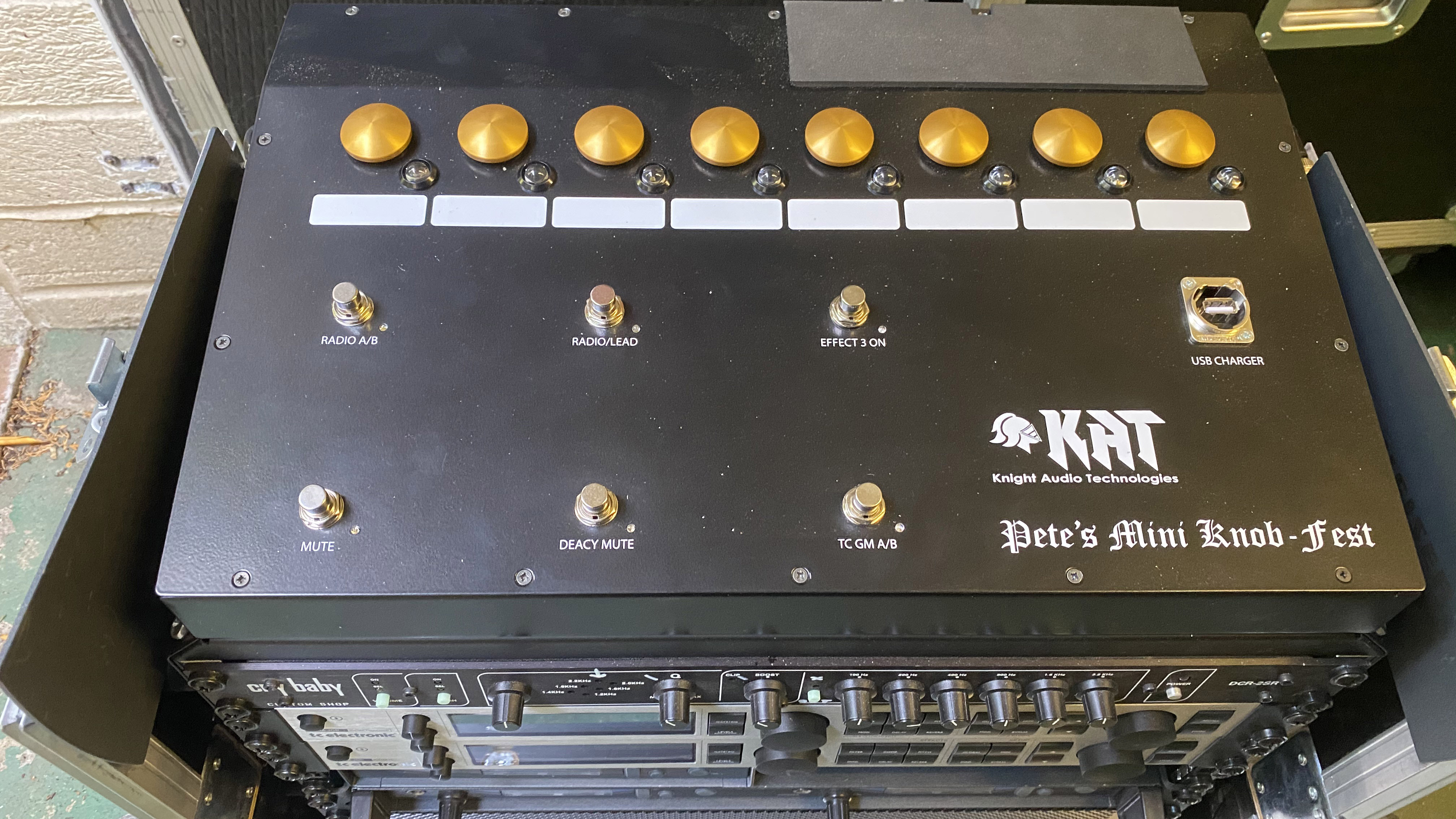
It’s also your responsibility to switch effects in and out during the show
“Back in the Paul Rodgers days Mike Hill designed Brian a footswitch and I had one too as we were finding that Brian would sometimes either not be able to get back to the mic position in time to switch an effect in or he would forget to switch one off. I could turn stuff off that he’d left on and I started to switch effects on when he didn’t make it back to the pedalboard because the stages are so big and he’s running around.
"Eventually I suggested that I should operate the effects so we took his pedalboard away, tried it for a few gigs and it’s just evolved from there. He trusts me to get on with it now and the only thing he operates himself is the wah pedal. I just try not to muck it up."
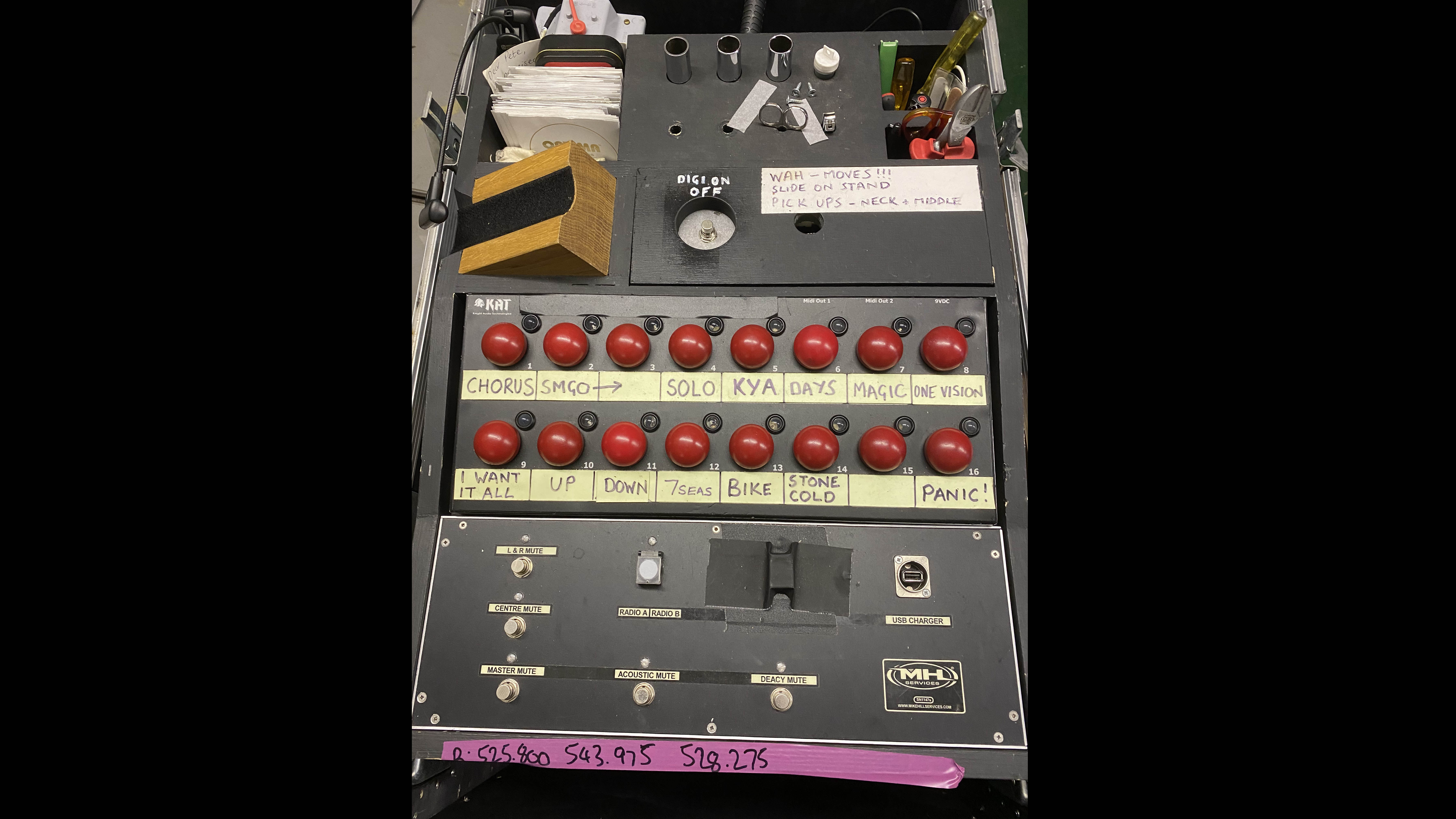
What does Brian have in front of him on stage?
“Just the controller for the wah, a Crybaby DC-15C. The thing with the Dunlop is that the LEDs are on the back of the pedal so I’ve wired them to a little plug-in box at the front so he can see whether he’s left it on or not. One good thing about that Dunlop is that, if he does leave it on, I can turn it off and reset it from the main rack."
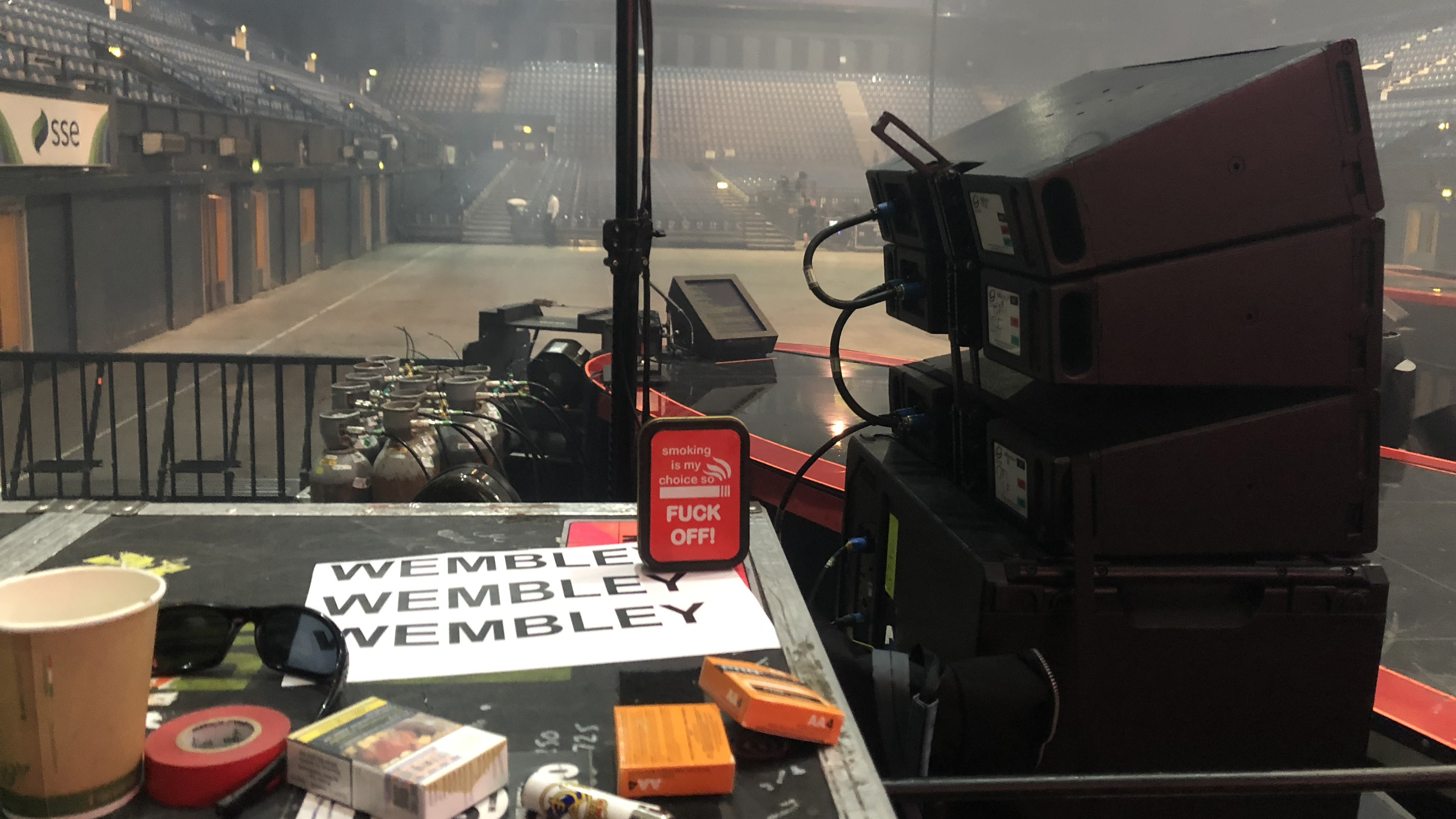
"You do have to check everything every time"
What sort of maintenance does the rig need day to day?
“It’s just testing everything. That rack stays on its wheels but it does get bounced around travelling thousands of miles by road, especially in Europe; some of the roads in what used to be called Eastern Europe can be pretty bad. It’s the same with the amps. You get them out at the other end after the night before and some of the chassis bolts will have shaken out, so you just give everything a wiggle and make sure it’s all nice and tight. But you do have to check everything every time.
“The other thing that happens is, because of the smoke machines – the hazers – all of your stuff gets covered in this film of oil, which can make things very noisy; the hazers are running all day when you’re in an arena and they’re there so you can see the lasers and lights. So every three or four gigs I’ll pull all the jacks out of the back of the rig and give them a wipe with some A4 paper, believe it or not. It’s ever so slightly rough and the amount of dirt you can get off a jack… you’d be flabbergasted!”
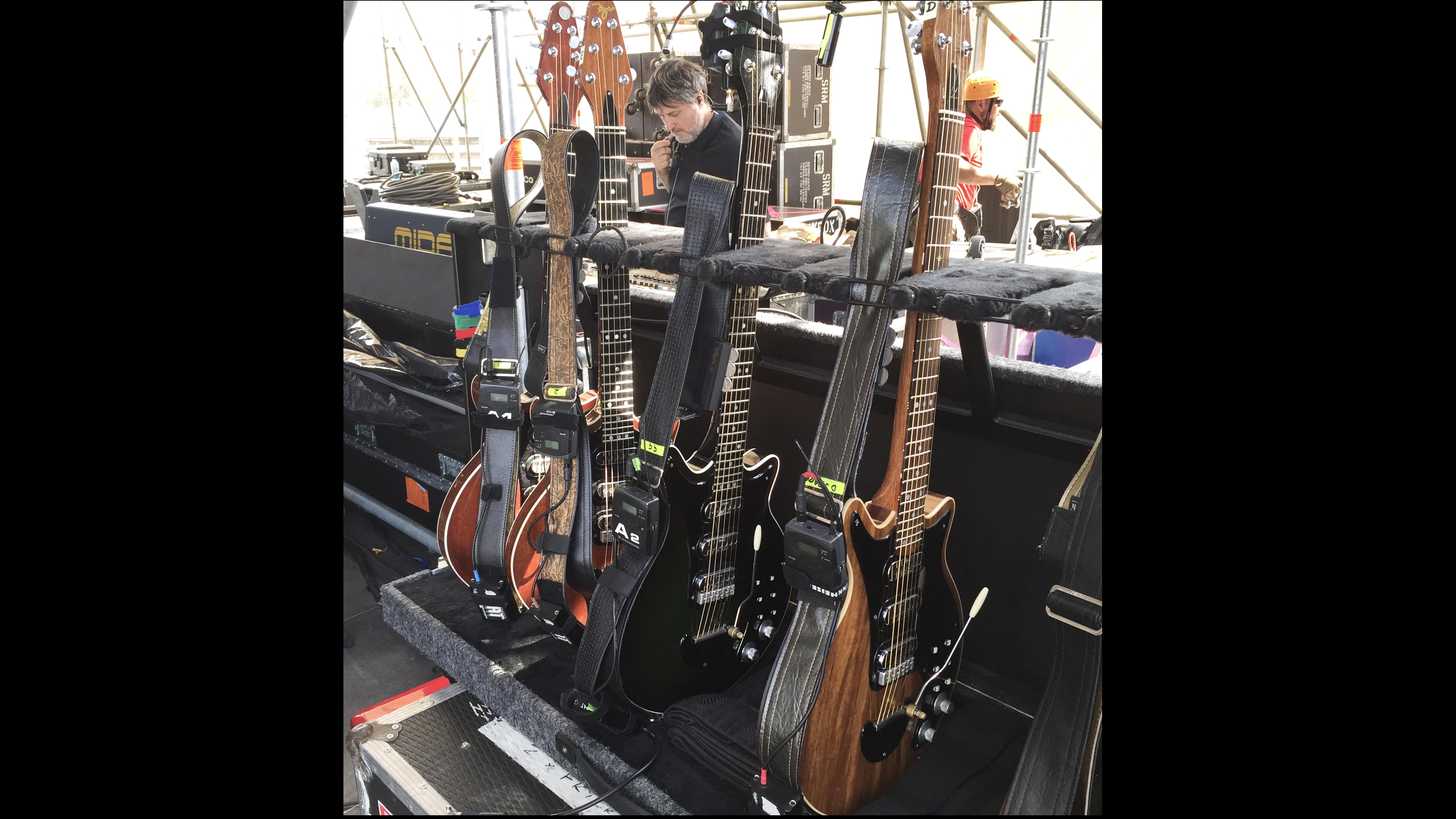

How about the guitars?
“The backup to the original Red Special is a Greg Fryer RS called ‘John’ and that would be used only if he were to break a string. For Fat Bottomed Girls, which is drop D, he plays another Fryer called ‘George’ and the backup for that is a Green Special built by Andrew Guyton.
On the thrust [stage] he plays a Guild F-512 acoustic, but I don’t look after that. I’ll always take another guitar or two too, usually a BMG and a BMG Super, and to warm-up in the dressing room he’ll use a Guyton Transporter (pictured backstage with Brian below), which is a little like those Steinberger stick guitars.
A photo posted by @brianmayforreal on Dec 1, 2017 at 10:13am PST
He was thinking of using it for a song at one point but it’s so small that it looks weird on him. It’s difficult to throw shapes with it; you’ve got to be able to throw shapes, otherwise what’s the point?
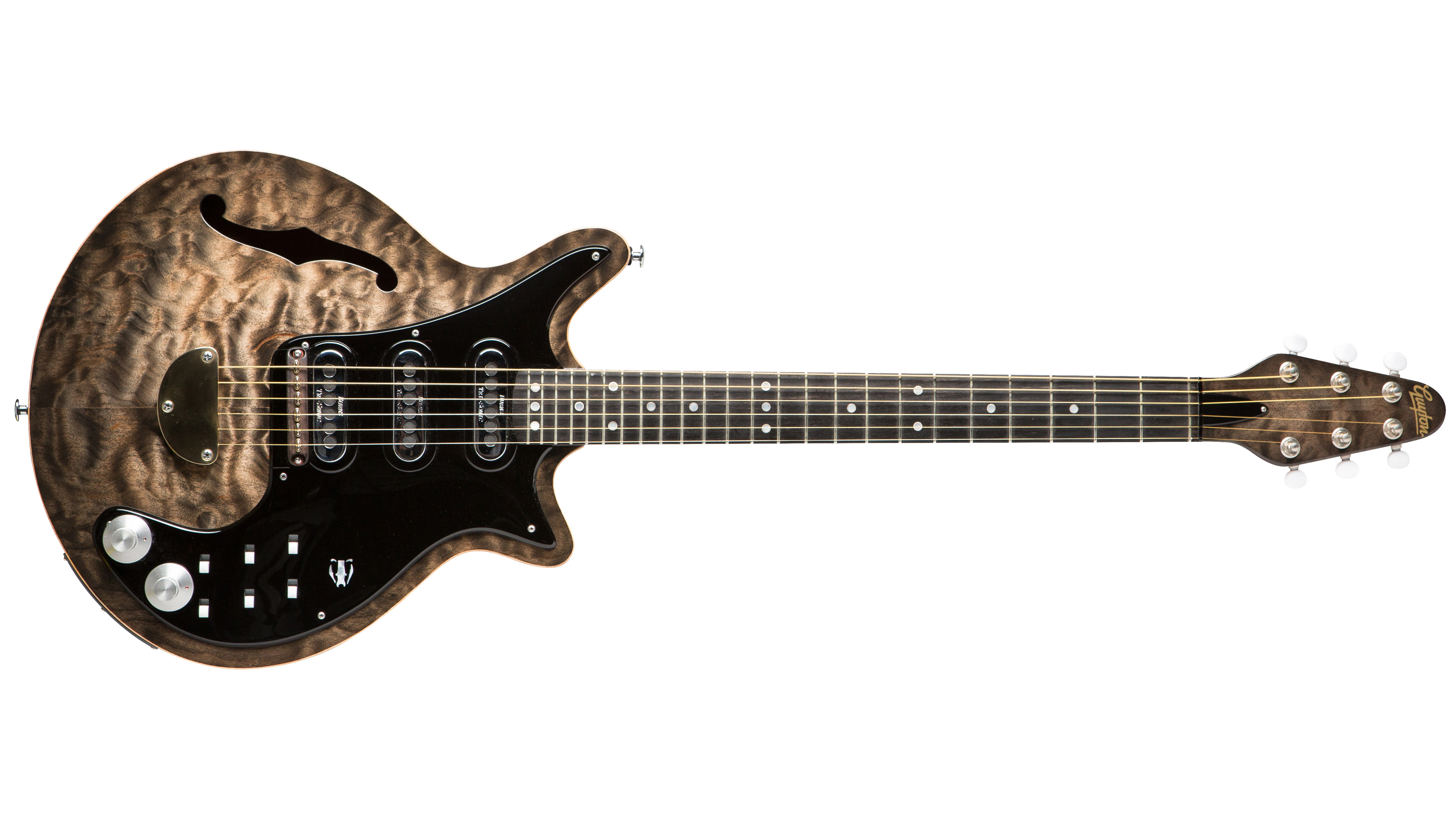
"I've noticed Brian hits the D string very hard so that tends to last maybe just one gig and two soundchecks"
“They play Crazy Little Thing Called Love on the B-stage now so we no longer take the Guyton ‘Badger’ out [this is a Archtop built by Andy Guyton that features a Piezo system alongside the usual trio of Tri-Sonics, plus a unique mother-of-pearl badger inlay on the scratchplate] as it would be incredibly difficult to do.
"You’d have to have two treble boosters and two transmitters hanging off the strap. He did try it and worked with the FOH guys to get a more authentic Telecaster sound at the start, but it didn’t really happen.
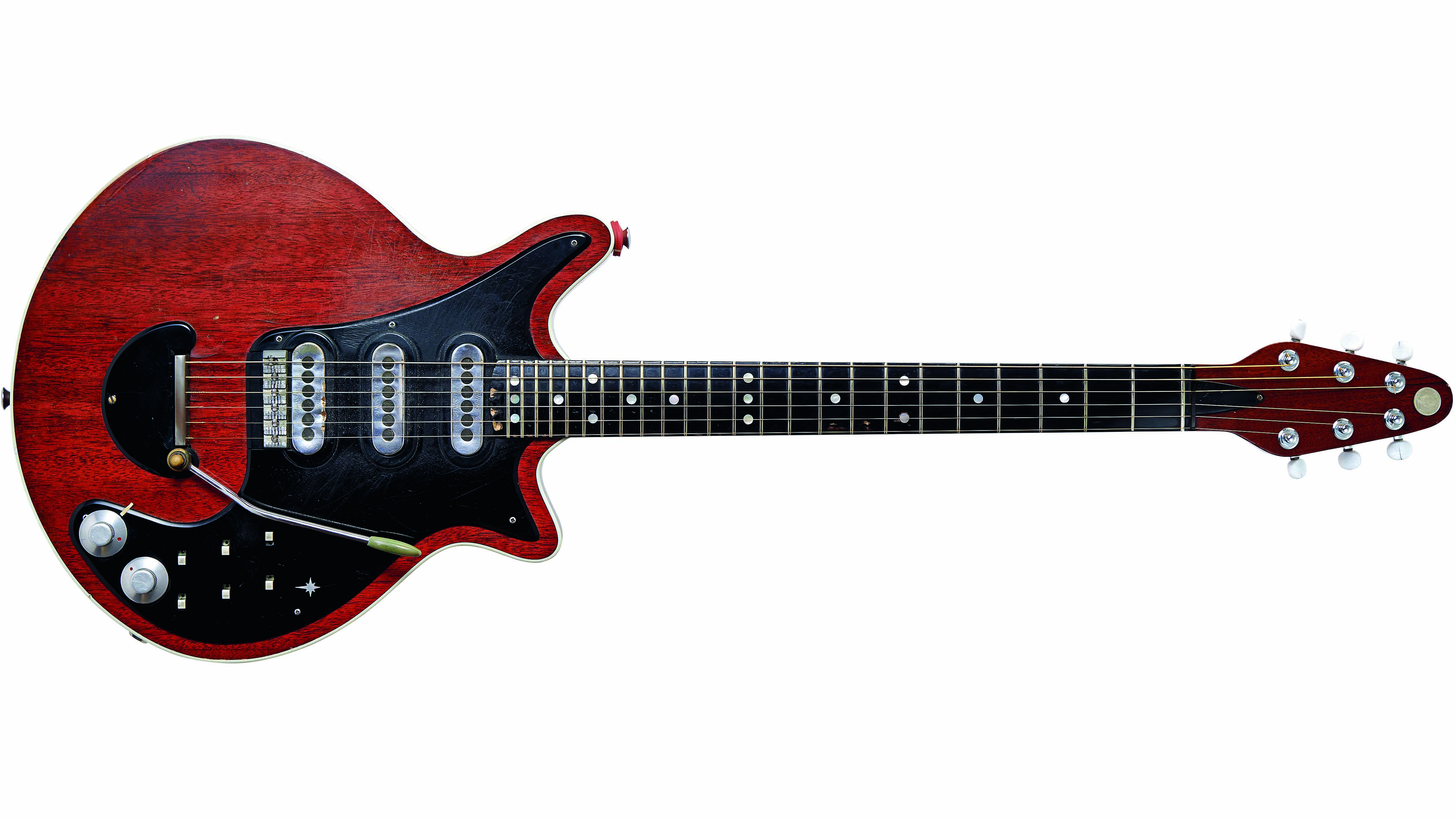
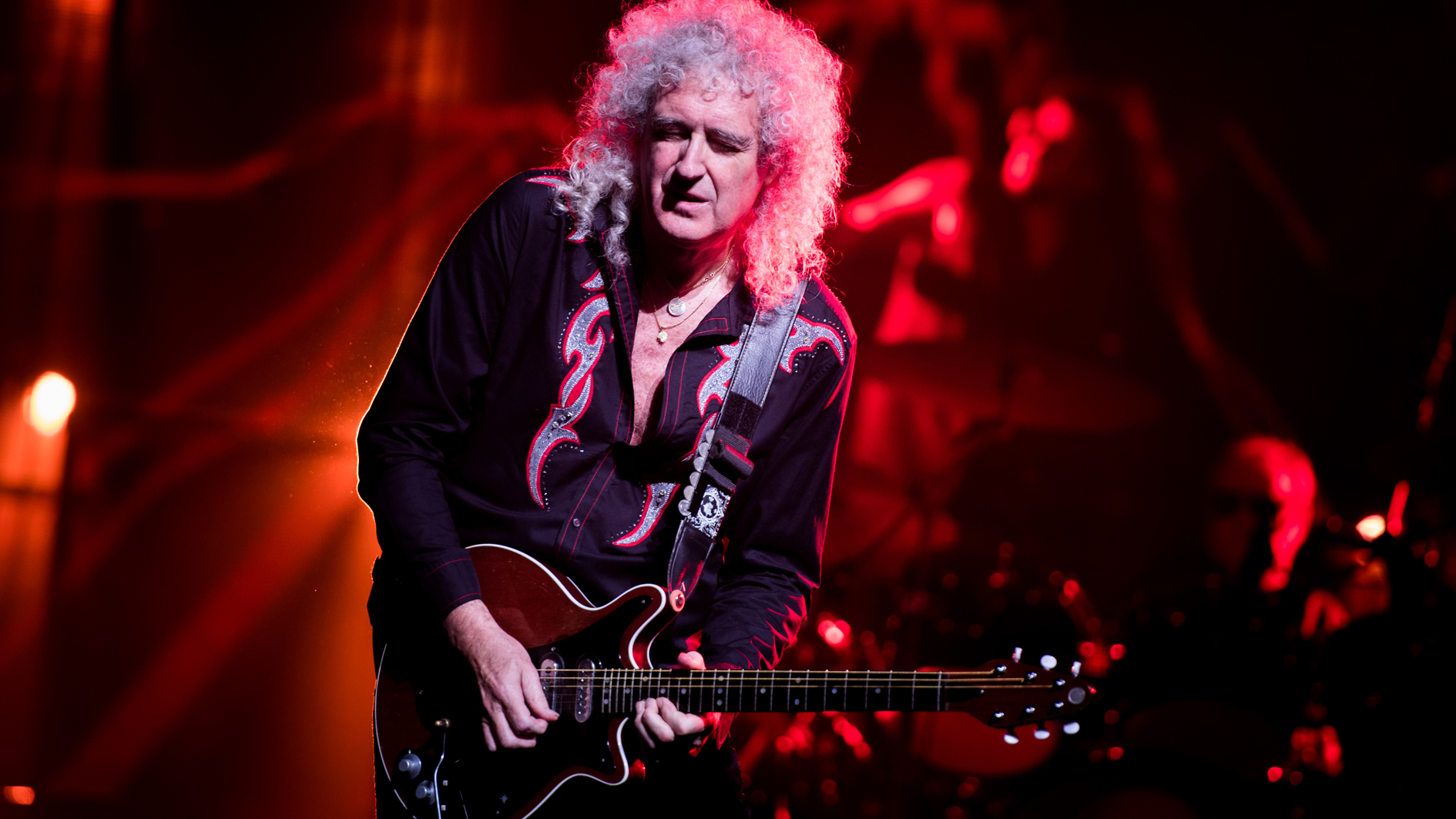
Our insider’s guide to emulating the unmistakable style of Queen’s legendary guitarist
“Each night I’ll check all the strings too. [Brian is] not massively keen on having new strings for every show but I’ve noticed he hits the D string very hard so that tends to last maybe just one gig and two soundchecks.
"He absolutely shreds it and you can feel it. I think on the last two tours I only had maybe two string breakages and, given the lightness of the strings and how hard he’s hitting them with a sixpence, that’s amazing. I’ve learned that there’s a definite pattern, though.
"He’ll break a top E every four gigs or so, so I’ll change it after three, and the others I’ll change maybe every four gigs; I run my finger along them and can feel when they’re going to go.”
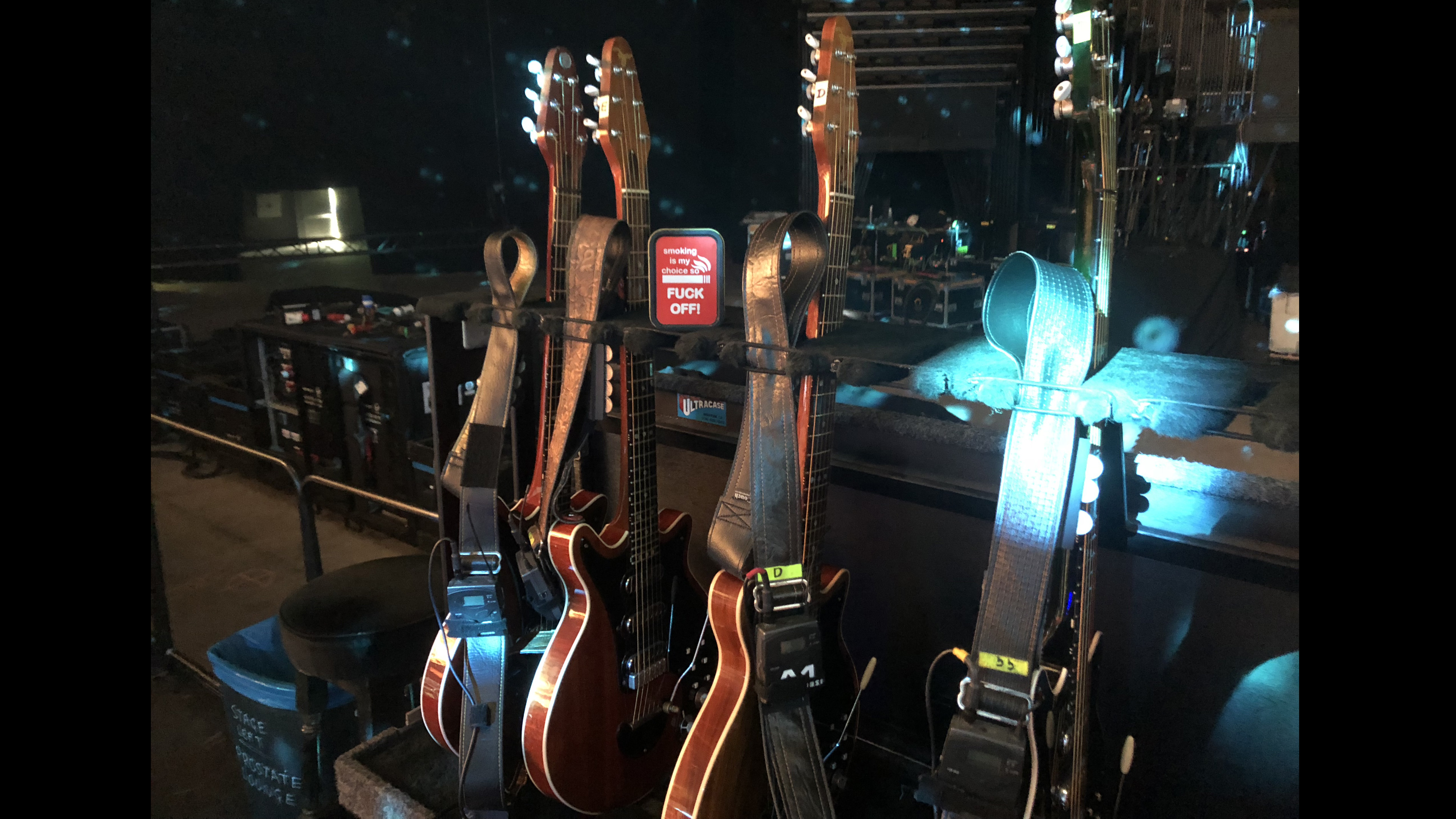
"If Brian turns up and never worries about the gear, which he doesn’t now, then my job is kind of done"
Does Brian have any real interest in the gear these days?
“Not really. He’s obviously interested in the sound of it but it’s all about consistency. If I can put my hand on my heart and tell him that nothing has changed since yesterday, and I know that what’s coming out of those AC30s is the same as it was at the last gig, I can almost say that my work is done.
It’s about confidence too. If Brian turns up and never worries about the gear, which he doesn’t now, then my job is kind of done, and going through all these things with the amps, removing the spurious circuitry that he doesn’t use and having them rewired with high-quality components, the power smoothing and the sourcing of valves, have just ramped up the reliability.
"I change valves because they’re going dull and that’s fine because that’s the nature of a valve amp, but we never used to get to that stage; they’d blow up first.”
"The window into which we can squeeze guitar frequencies [for wireless systems] is rapidly diminishing: it’s becoming a real problem"
As you’ve got things running extremely reliably now, are there any issues that you still encounter?
“The main problem for me all over the world is RF radio. All the analogue frequencies are being sold off, there are dishes and more powerful mobile phone masts everywhere, TV stations opening up, and the window into which we can squeeze guitar frequencies [for wireless systems] is rapidly diminishing: it’s becoming a real problem.
"You’ve got so much RF in the air and because of the high-gain scenario that Brian uses you pick it up on every single frequency. There’s no rhyme or reason for it either. You’ll arrive at one gig and it’ll be completely quiet, but move onto the next show and it’s a nightmare; we’ll be rerunning earths with the electricians, all that.
"Luckily Adam’s (Lambert) monitor engineer Niall Slevin is a real rocket scientist when it comes to RF, but sometimes even he can’t fix it, so if there’s nothing we can do I’ll point it out to Brian and show him where on the stage it’s particularly noisy and where it’s quieter.
“It’s a nightmare and we’re thinking of moving him onto a digital system but that in itself creates loads of problems as he likes the companding; the compression of the radio signal at one end and its expansion at the other. He prefers the sound of that to the sound of a lead, and a digital system is so clean… I really don’t know what we’re going to do. It’ll be lots of sleepless nights, lots of smoking and drinking coffee.”
In effect you’re the Keeper Of The Tone. Do you feel any responsibility for that?
“Absolutely, that’s my main responsibility. As I said, it needs that consistency and it’s my job to both keep it the same and make it more reliable. He’s not going to use a Fractal rackmount, have all the gear under the stage and use in-ears, he’s just not; he wants to hear three screaming AC30s behind him thumping him in the back. He wants monitors and noise everywhere, he wants excitement, and he wants it to sound like it did in 1986. Hopefully it sounds better now than it did then!”
The new Queen + Adam Lambert’s live album Live Around The World is out now the rescheduled UK and European tour begins on 23 May 2021. More info at queenonline.com
Also available now is the updated and revised version of the book Brian May’s Red Special, by Brian May and Simon Bradley.
Simon Bradley is a guitar and especially rock guitar expert who worked for Guitarist magazine and has in the past contributed to world-leading music and guitar titles like MusicRadar (obviously), Guitarist, Guitar World and Louder. What he doesn't know about Brian May's playing and, especially, the Red Special, isn't worth knowing.